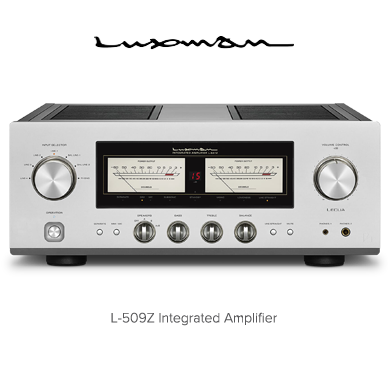Your Senses Will Be Thunderstruck by the Performance: AudioQuest Thunder 20-Amp Power Cable Provides Uncompressed High Current, Reduces Distortion, Ensures Wide Dynamics
AudioQuest's Thunder power cable will leave you thunderstruck as to the sonic improvements you'll hear once you connect it to a component. The company's Storm Series line of power cables is like a hurricane – they blow you away with difference-making performance and laboratory-developed construction. Created using the same technology, the individual models in Storm Series differ only in the material composition of their directionally controlled conductors. All have patented ground noise-dissipation technology, zero characteristic impedance (50Hz to 1MHz), a patented 72VDC Dielectric Bias System, and uncompressed high-current transfer abilities. Thunder features Solid Long-Grain Copper (LGC) and Perfect-Surface Copper (PSC) conductors for resolute performance that improves the sound of any amplifier to which it's attached. 100% Music Direct Guaranteed.
Alternating Current (AC), is a far-from-perfect power source. AC power technology is well over a century old and was never designed to meet the exacting standards of today's high resolution audio-video components. AC noise is present at the utility source, and is then exacerbated by radio frequency noise that is induced (picked up by the AC power cord) and coupled to the component power supplies and to circuit ground. This creates distortion and low-level signal losses via the "masking effect." Further, power amplifiers can require immense reserves of transient current for their power supplies to react to and then stabilize during dynamic audio passages. Most AC power cords and power conditioner-regenerators, though helpful to a point, are simply not up to the task.
Power amplifiers present a real challenge for any AC power source, as the transient current requirements (though short in duration) can be many times that of the average (RMS) current consumption. Power amplifiers are also unique from all other components in that the current draw is dynamic, not constant, and it changes with volume and audio signal content. Though many AC power cords may feature low DC resistance to allow for some of this requirement, the characteristic impedance of the AC cable is equally responsible for assuring uncompromised performance. Many premium AC cords constrict or compress the audio transient as their characteristic impedance restricts the transient current.
High-Purity Conductors
A carefully finessed combination of solid high-purity Long-Grain Copper (LGC) and high-purity Perfect-Surface Copper (PSC) conductors prevent strand interaction, a major source of ear fatiguing transient intermodulation distortion. LGC allows a smoother and clearer sound than standard OFHC (Oxygen-Free-High-Conductivity) copper. The astonishingly smooth and pure Perfect-Surface Copper further eliminates harshness and greatly increases clarity compared to OFHC, OCC, 8N and other premium coppers.
Uncompressed High-Current Transfer
With current capacity of 20 amps RMS @ 125VAC 50/60Hz (16 amps RMS @ 220-240VA 50/60Hz), Thunder/High-Current can withstand current transient peaks many times its continuous (average) RMS rating. This makes Thunder/High-Current ideally suited for a wide assortment of AC power conditioners, power regenerators, AC isolation transformers, and AC battery back-up devices, as well as any power amplifier, powered subwoofer, powered loudspeaker, powered receiver, or integrated amplifier.
Ground Noise-Dissipation Technology
AC Ground wires provide protection from current-wiring faults, but they also act as antennas. Thus, they are subject to induced radio frequency (RF) noise. This RF noise bypasses component power supplies and is typically coupled directly into a system's most sensitive audio-video circuits. AudioQuest's patented Ground-Noise Dissipation greatly reduces this distortion, yielding unprecedented levels of noise dissipation across the widest bandwidth (range) of radio frequencies possible. Our unique circuit-topology utilizes a common-mode phase-cancelling array, in concert with proprietary dielectric materials which provide additional differential linear filtering.
Dielectric-Bias System (DBS; US Pat #7,126,055)
By creating a constant dielectric field for the cable's primary capacitance field or dielectric, DBS assures extended bandwidth and more evenly filtered noise dissipation, eliminating the distortions and ringing that plague other cables even after years of use and so called "run-in time." In addition, DBS assures that the RF Noise-Dissipation System works as linearly as possible.
Controlled for Correct Directionality
All drawn metal strands or conductors have a non-symmetrical, and therefore directional, grain structure. AudioQuest controls the resulting RF impedance variation so that noise is drained away from where it will cause distortion.






































